|
Summer Daydreaming – Winter Options Summer Vacation is a distant memory. The kids are back in school. While you’re grinding away at work, isn’t it nice to daydream about next summer? You don’t have to wait that long. Winter is a great time to visit some popular outdoor destinations. The chip companies I worked for usually shut down between Christmas and New Years, so I’d be taking unpaid time off every winter whether I wanted to or not. Either way, it was worth more to me to get out of Silicon Valley and find intensely-snowy outdoor adventures instead. Why not go in winter? 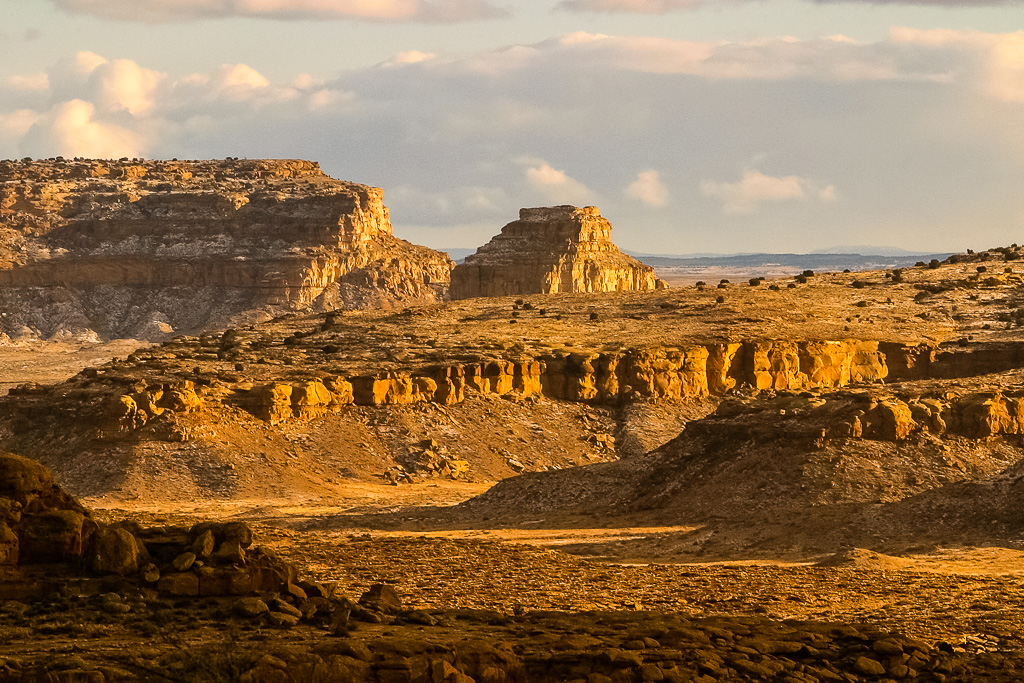 Fajada Butte from North Mesa, Chaco Canyon, New Mexico If you want to stay and play in marquee attractions like Yosemite Valley, it’s already too late – you needed to make reservations last March at the latest. Parts of Yosemite and some parks like northern California’s Lassen Volcanic close after the first snowfall anyway. But there are other intensely fun places for winter visits. |
 |
|
Head For The Four Corners The Ancestors couldn’t leave for the winter. They had to make the best of it in the Great Houses and small pueblos of Chaco Canyon. But they had beautiful snow-dusted Great Kivas in a gorgeous landscape. Maybe they celebrated the feast of Shalako in early December to thank the gods for good harvests. And they had winter survival dialed in pretty well in fire-heated buildings – at least for the first 250 years or so.  Great Kiva, Pueblo Bonito Ruin, Chaco Canyon Burn marks on back wall likely from ritual closing and abandonment While you have the luxury of warm hotel rooms, a heated car, and heavy coat, you still get to drive a dirt road to see Chaco. Even during the holidays, you’ll have the place mostly to yourself. For many years, a winter flight to Albuquerque and drive to Farmington was my plan of choice. Farmington’s Silver River Adobe Bed & Breakfast was my base for Chaco, lesser-known Aztec Ruins and Salmon Ruin, and jumping off to Bisti/De-Na-Zin Wilderness (Bisti Badlands), Canyon de Chelly and Monument Valley. 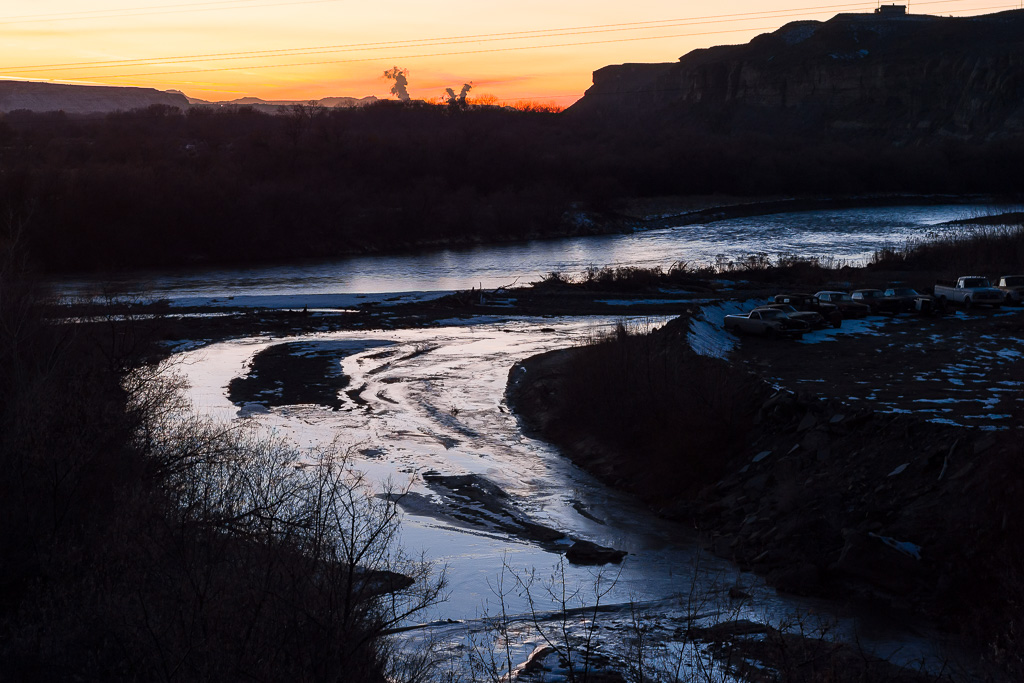 San Juan River near Silver River Adobe Inn Bed & Breakfast Farmington, New Mexico In Chaco, check out the trail to North Mesa with its views of Fajada Butte and its gateway Pueblo Alto and New Alto Great Houses. You can see the line-of-sight to distant Pierre’s Site and further to Huerfano Mesa, useful for visual signaling to Aztec, Salmon and other northern settlements. The scramble up and down the crack behind Kin Kletso ruin can be tricky, but it’s very doable if you take it slow. 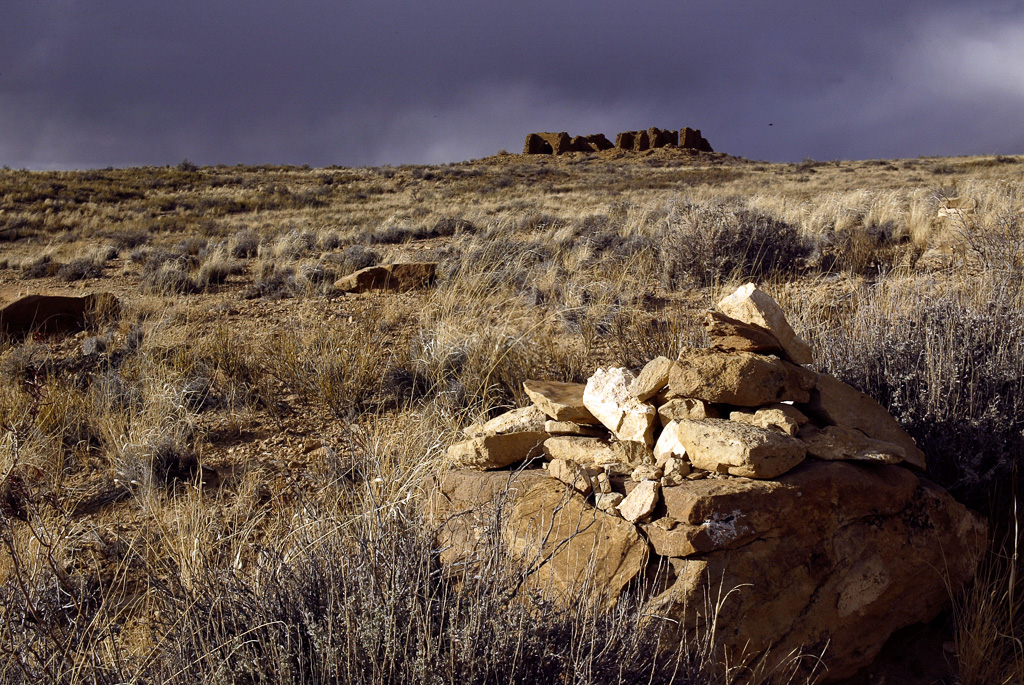 Pueblo New Alto on North Mesa, Chaco Canyon For Chaco and Azrec, you’re 1/2 hour closer if you stay at the Bloomfield Best Western Territorial Inn & Suites. Winter visits to Canyon de Chelly usually mean drives along the rim or a hike down to White House Ruin, the one trail you can walk without a guide. Your best bet for close-in lodging and food is the Thunderbird Lodge, expanded from the original 1896 trading post. Canyon de Chelly has been occupied for over 2000 years. The traces of Ancestral Puebloans are what you see in cliff ruins. It was the last refuge of the Navajo when Kit Carson was attempting to round them up for the Long Walk in 1864. 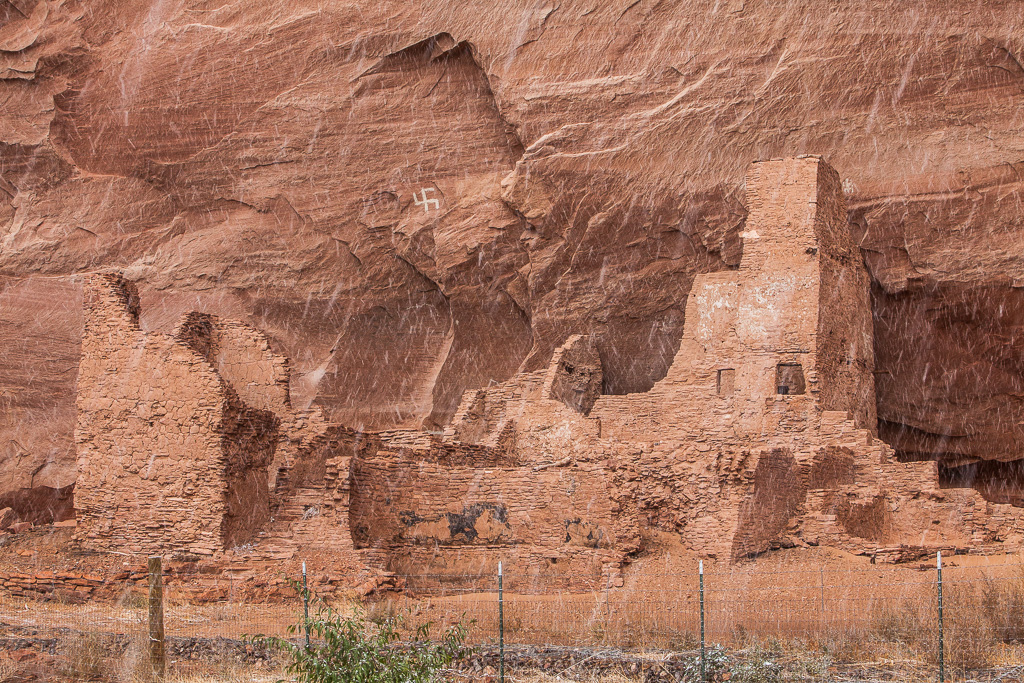 White House Ruin, Canyon de Chelly Monument Valley Navajo Tribal Park can be pretty empty in winter. I stayed at Goulding’s Lodge, established as a trading post in the 1920s. I captured iconic sunrise views of the ‘Monuments’ on film from Goulding’s front porch. You can shoot Ansel Adams’ iconic view near the visitor center, not far away. A few years later, I booked a jeep tour with a Navajo guide to nearby Mystery Valley. It offers similarly-gorgeous terrain and ruins with far fewer visitors. 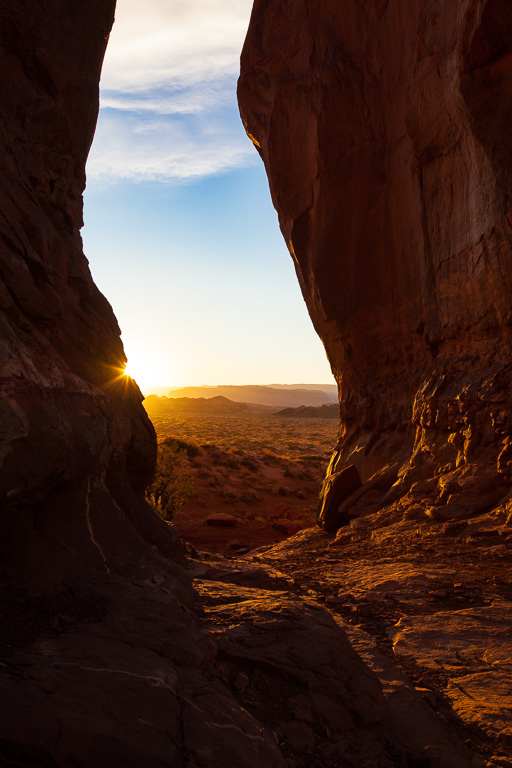 Keyhole view, Mystery Valley, Navajo Nation, Utah The elk herd up Utah’s Blacksmith Fork Canyon used to come down from the high country and winter in the valley around Ogden. To keep them from munching backyard lawns and flowers, the state feeds them hay at Hardware Ranch Wildlife Management Area. The WMA offers rides on the wagon used to feed them. It’s a great way to get close to otherwise skittish wildlife. 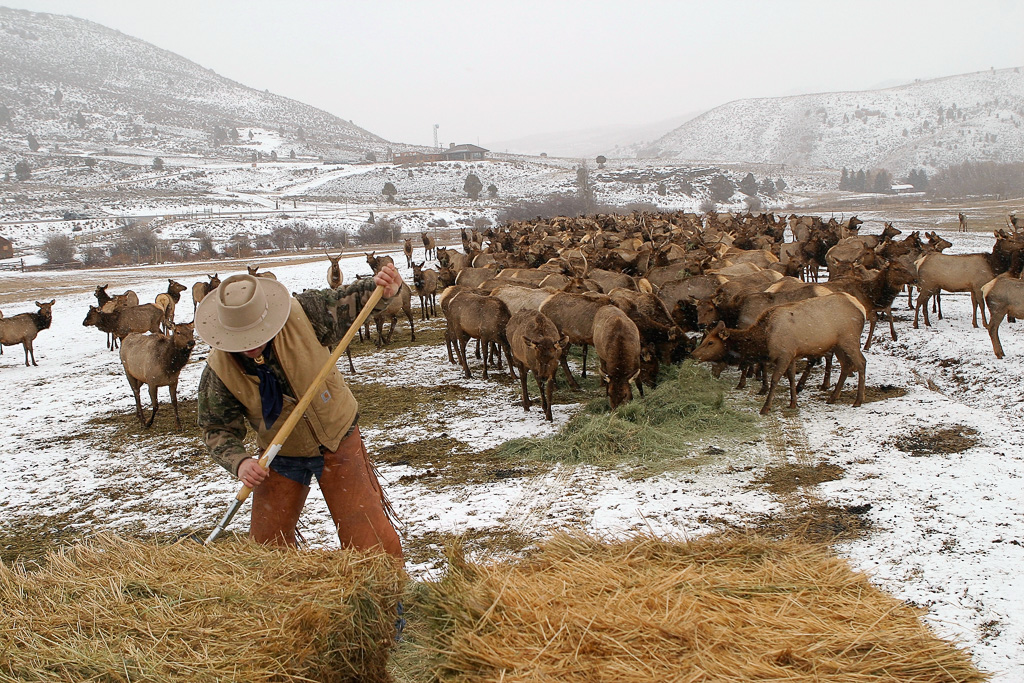 Feeding the elk, Hardware Ranch Wildlife Management Area, Utah Up To Taos I first came to Taos for an early spring birthday weekend in 1991. I skied in shirtsleeves the last two days of the season at Taos Ski Valley, in between visits to Taos Pueblo. I enjoyed the mountains and the people so much I came back for Christmas. Taos is fun and quirky – no blandness here in either the food or the culture. At Christmastime, I’d ski Taos for the day, then have dinner at what is now Lambert’s. It was like eating in a friend’s home, with confortable, rustic seating and a menu that used to change weekly. At Taos Pueblo one winter afternoon, I felt the temperature drop very quickly, and made my way inside one of the small bakeries. As I walked in the door, it started to snow furiously. I watched big, fat flakes spiral down as I enjoyed fresh fry-bread and some conversation with locals. 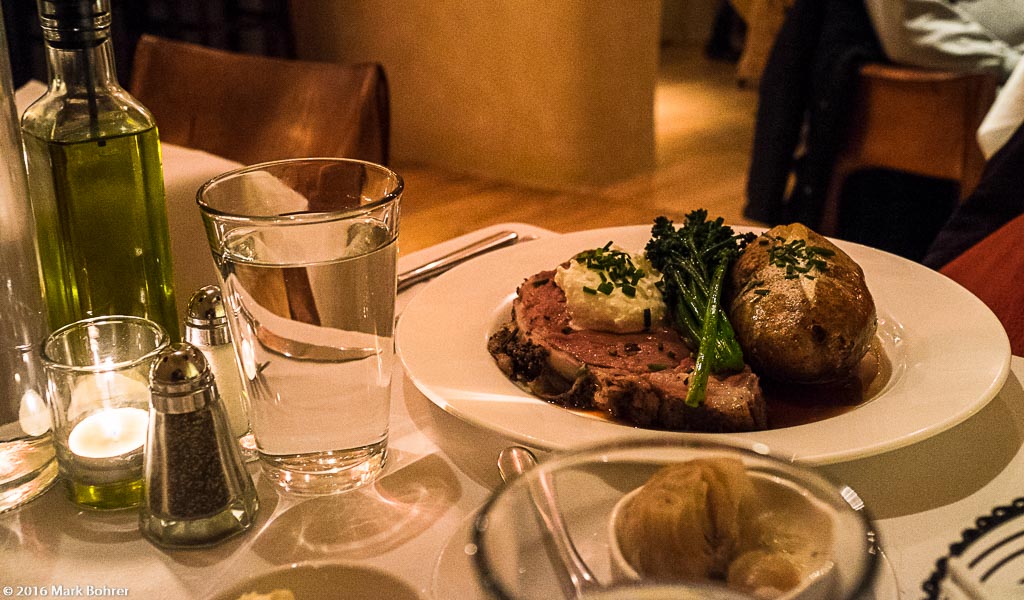 Excellent meal at Lambert’s, Taos, New Mexico 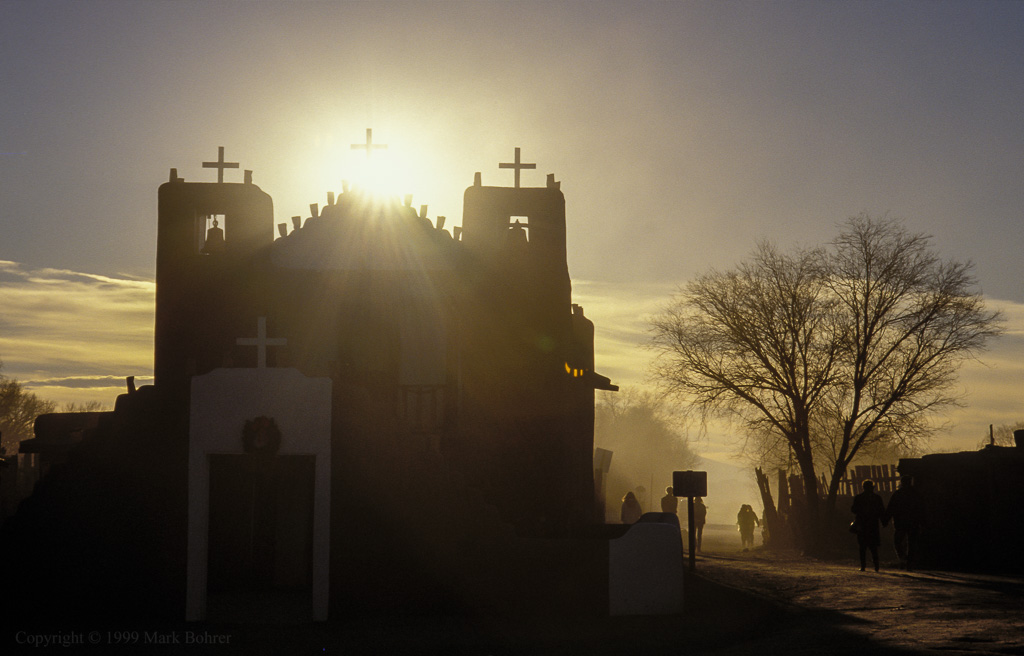 St. Jerome Chapel, Taos Pueblo, New Mexico This picture was used for the cover of Christmas Every Morning, Waterbrook Press When local innkeeper Sue Smoot used to host La Posada de Taos, I had great ‘where are you from?’ guest conversations every morning. Sue generally offered two breakfast choices, but would always tell me, “I know your filthy habits!” whenever I stayed with her. (I ate vegan vegetarian at the time.) She passed away in 2013, but La Posada de Taos is still there, run much the way she did it. No Taos visit is complete without a drive around the Enchanted Circle. This route loops north past Red River and the Moreno Valley, home to an ice-fishing derby every January. I’ve skied the Enchanted Forest Cross-Country Ski Area near Red River. Modeled on California’s Royal Gorge near Donner Lake, Enchanted Forest features its namesake aspen and evergreen forest views, and also breaks out into vistas of Wheeler Peak, the highest point in New Mexico. 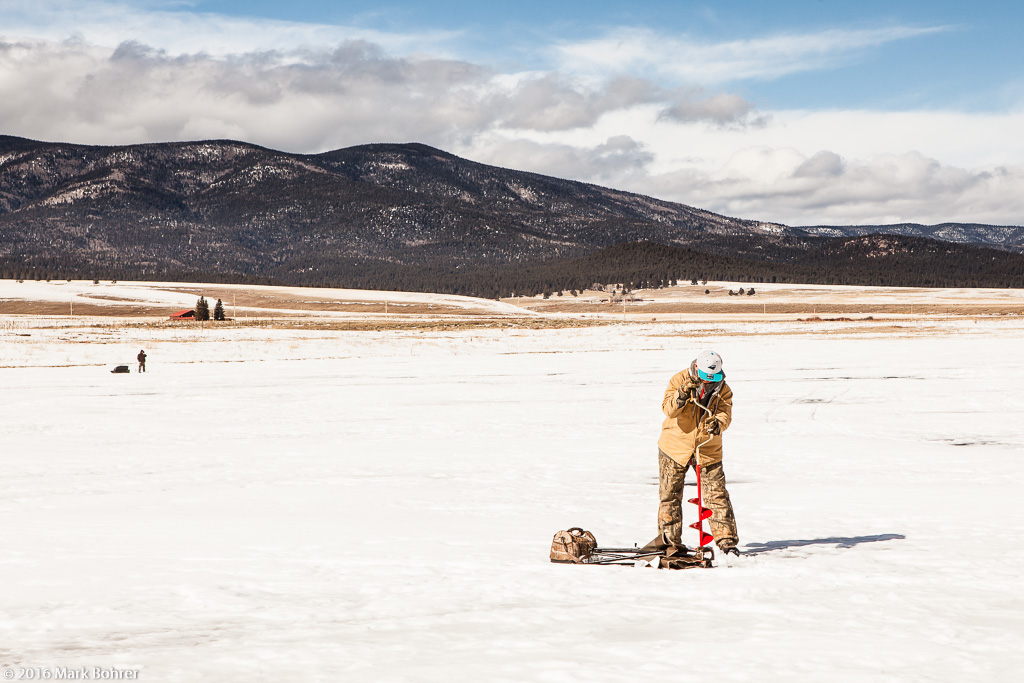 Ice fishing, Eagle Nest Lake, Moreno Valley, New Mexico Colorado’s West and South Slopes Everybody raves about the east side of the Front Range for skiing and hiking. The west side is more varied and just as pretty. It’s also less touristed because it’s a bit harder to get to. I’d fly into Grand Junction’s Walker Field (GJT) for this one. I visited family and admired the views into Colorado National Monument, a land of sandstone hoodoos and spires set aside in 1911. Then I’d drive a couple hours east to Basalt, Carbondale and Aspen, Colorado. Skiing at Aspen and exploring the winter backcountry were next on the agenda. I celebrated the turn of the century with friends here. Flights were cheaper than usual because of widespread fear of the Y2K calendar bug scrambling computer systems and causing planes to fall out of the sky. (I’m not making this up…) We’ve also spent a leisurely Christmas around Durango. The Durango & Silverton Narrow Gauge Railroad offers their Christmas Tree trains to the first turnaround point at the Cascade Wye, showing off spectacular winter scenery. It’s worth flying to Denver or Albuquerque and driving north. 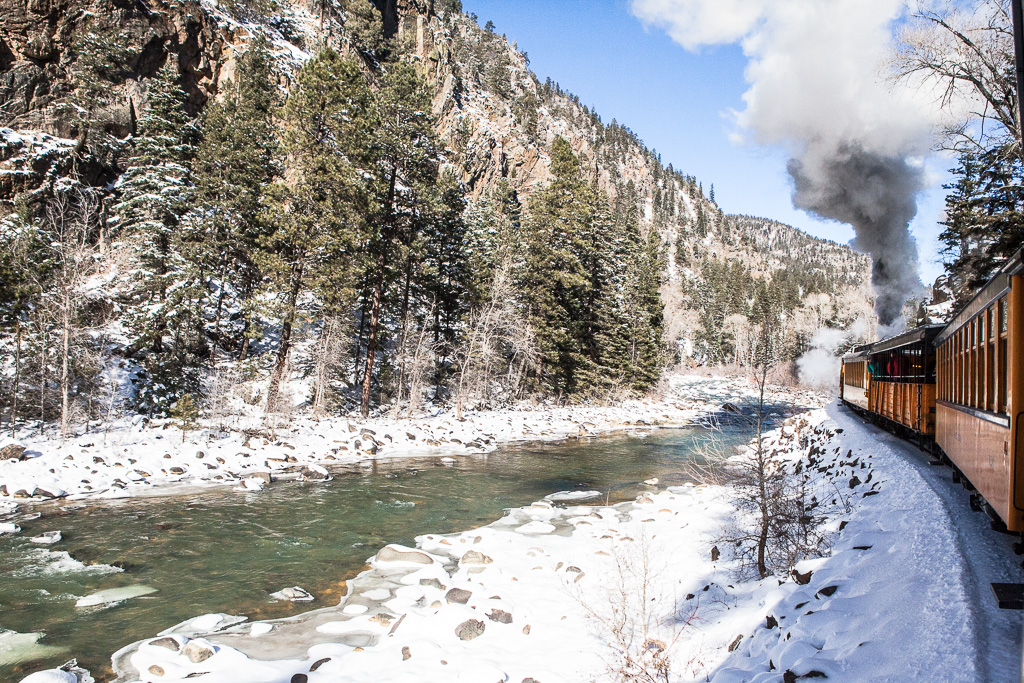 Christmas Tree train, Durango-Silverton Narrow Gauge Railroad Shot Notes Over the years, my travel gear of choice has changed. I like to have two dSLR ccameras and three lenses with views spanning full-frame 16-200mm. I also used to carry a 400mm f/4 DO IS on the off-chance I’d see wildlife, but winter trips to the Four Corners have mostly been about the landscape and its people. If I’m going light and ruins aren’t involved, I might leave the ultrawide zoom at home and use full-frame 24mm as my widest coverage. For Chacoan ruins, though, I always bring the 16-35mm f/2.8L, and sometimes a 24mm f/3.5L TS-E tilt-shift lens to keep verticals from tilting over. You can shoot Four Corners travel with prime lenses and lighter-weight cameras – it’s what I did for years with Canon FD film gear – but you might feel a bit limited. Modern f/2.8 zooms give great image quality and flexibility. Their main downsides are weight and bulk. I like the Fuji X-E2 and adapted Leica primes plus adapted Canon FD 100-300mm f/5.6L, but I will be cropping and post-processing more. |
(408) 483-3782
Curious about how to shoot ruins?(408) 483-3782
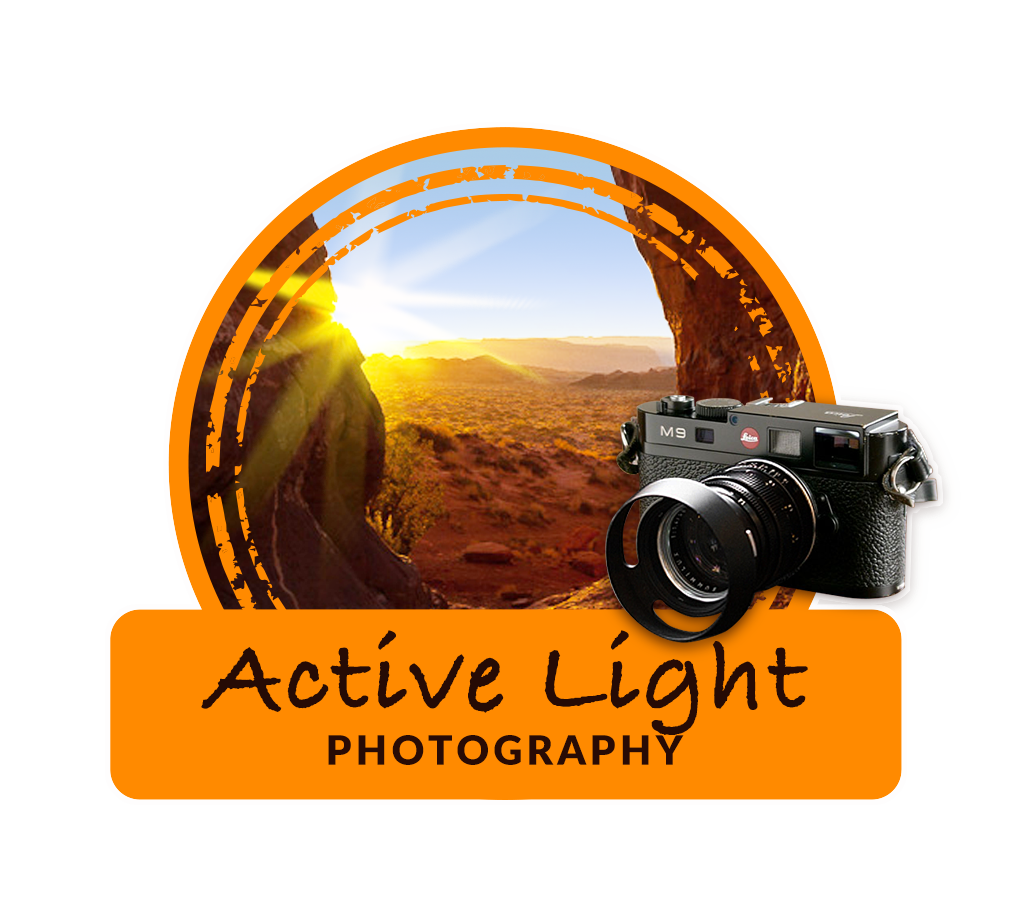
Recent Comments